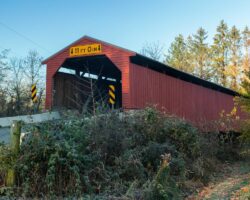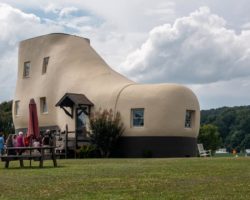When you hear the term “State Museum” there’s a good chance that your mind instantly goes to a 1980s Communist country. You might imagine the outside of the the building being a large concrete monstrosity; the inside filled with propaganda designed to tell the “official” story to the cowering masses.
Fortunately, the State Museum of Pennsylvania doesn’t fit this description (though the circular building in which it’s housed does lack a certain charm). In fact, the State Museum is actually a very well put-together museum that does an excellent job of showcasing the history of Pennsylvania.
Spanning prehistoric geology up until the early 1900s, the State Museum of Pennsylvania covers an impressive amount of territory in its three floors of exhibits. While visits can start anywhere, the museum is best explored from the top floor down.
The top floor of the museum covers topics related to Pennsylvania’s nature. Starting with the geological makeup of Pennsylvania, the floor works its way through an impressive collection of fossils, taxidermied animals, and scarily large models of insects. The upper floor is a tad on the dark side, making some of the signs difficult to read (a problem that persists through the museum), but does make seeing the specimens easier.
The highlight of this floor are the several large animal fossils, including a rather scary alligator/shark hybrid creature that may very well show up in your nightmares. I, for one, am glad that guy doesn’t live in Pennsylvania anymore.
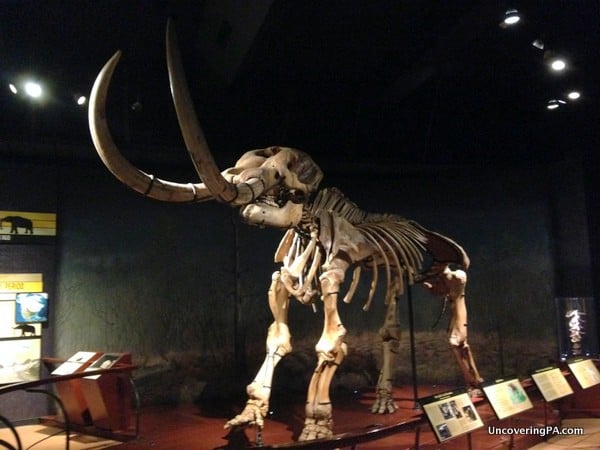
There is also a fantastic, 90% complete mastodon fossil that is on display. Discovered in Monroe County in 1968, the “Marshall Creek Mastodon” is one of the best specimens ever found. This fossil may very well be the highlight of many children’s visit to the museum.
The third floor is also home to the museum’s planetarium. Featuring a variety of different shows, the $2 admission fee likely makes a visit a steal, but unfortunately, I was unable to judge for myself because there were no shows the day I visited.
The second floor of the State Museum of Pennsylvania focuses more on the industries and people that have shaped Pennsylvania through the years.
I especially enjoyed the section about the Native Americans that inhabited Pennsylvania. While the museum glosses over many of the political issues regarding the native population, I doubt that you’ll find a better collection of artifacts in the state. Going into my visit, I knew very little about the tribes that had once inhabited Pennsylvania, so I found the museum to be a great introduction to the subject.
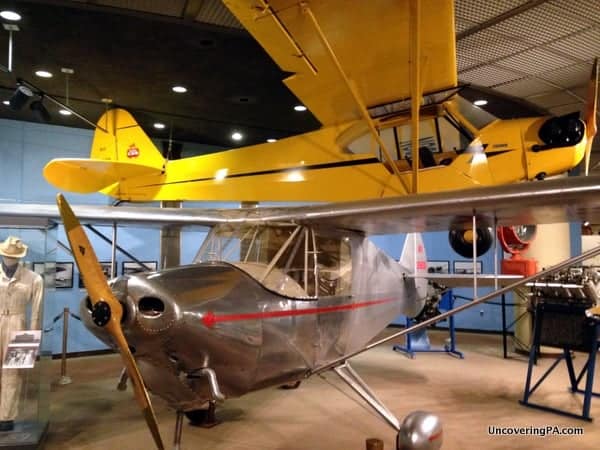
The second floor is also home to a collection of machinery crafted and used in Pennsylvania from the first settlers through the early 20th century. This area provides visitors a bit of everything, from old cars and airplanes to a Conestoga wagon and cabin-making tools. There’s no question that everyone will be able to find something that interests them.
Also on the floor is the museum’s collection of Civil War memorabilia. While interesting, the collection pales in comparison to those offered at the nearby National Civil War Museum or at the Gettysburg Battlefield. However, if you’re just looking for a brief introduction into the war, the museum certainly has a nice display.
On your way up to the top floor at the start of your visit, you’d be hard pressed to miss the giant statue of William Penn, the founder of Pennsylvania. Located behind the statue is a collection of some of the most important documents in Pennsylvania’s history, including a handwritten copy of the Penn Charter that established the colony of Pennsylvania.
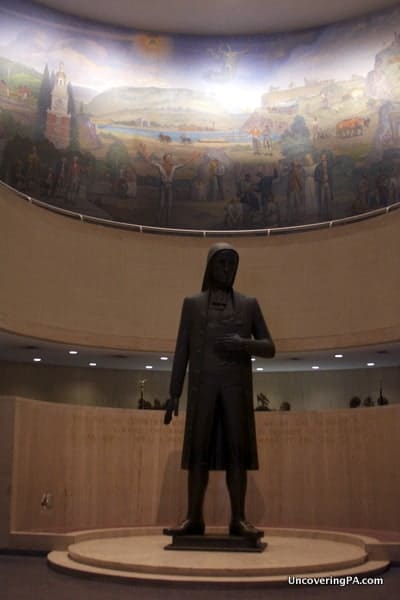
The first floor, which is actually one level above the entrance, is also home to a collection of temporary exhibits, as well as an area called the “Village Square” which features a variety of recreated storefronts from the late 19th to early 20th centuries.
Overall, I really enjoyed my visit to the museum. While it may not provide an extensive amount of information on any one subject, the museum will give you a great overview of Pennsylvania history and geology.
I definitely recommend a visit to the State Museum of Pennsylvania for anyone who is interested in PA (and isn’t that why you’re all here?)
Note: I was given free admission to the State Museum of Pennsylvania in order to facilitate this review. However, the opinions expressed in this article are my own and were not subject to review.


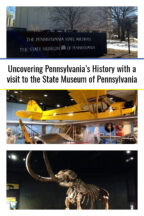
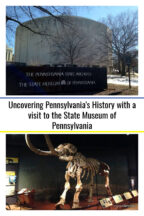
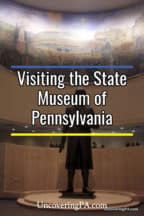
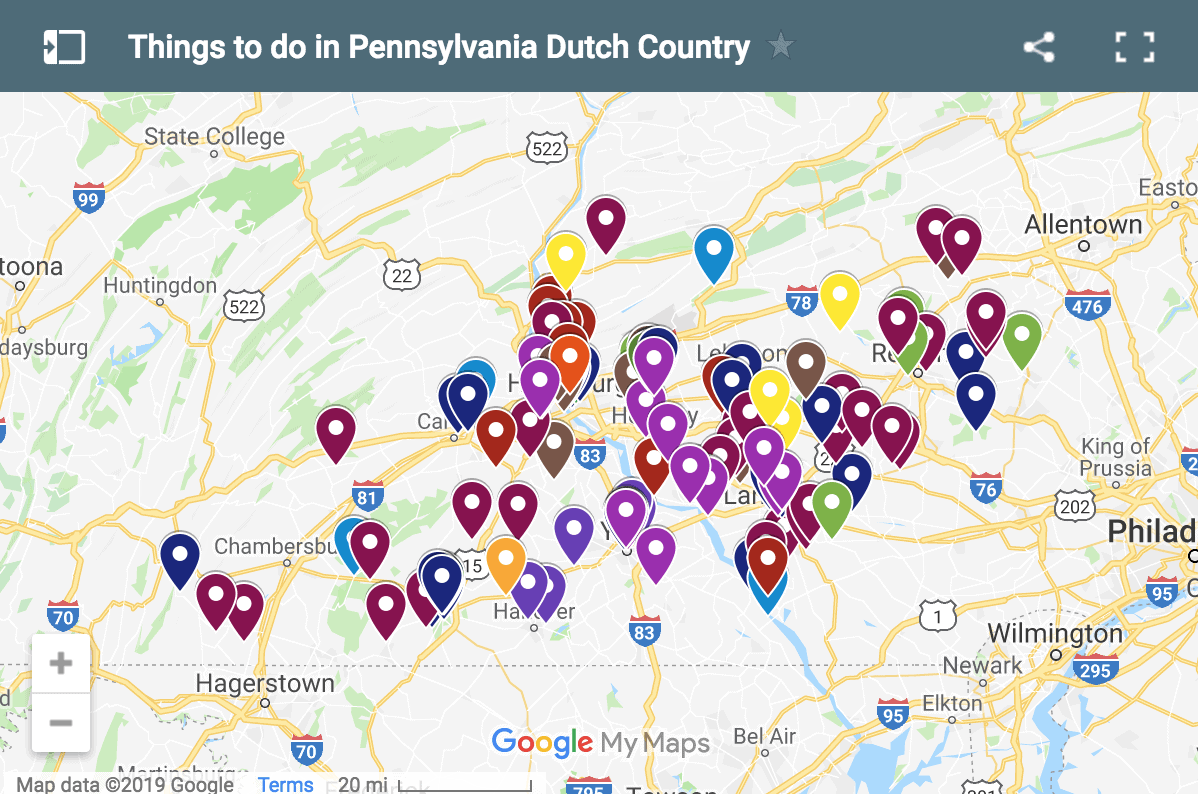 "
"

